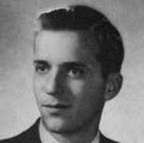16.1.5: Arabidopsis Thaliana
- Page ID
- 5781

This little plant has become to plant biology what Drosophila melanogaster and Caenorhabditis elegans are to animal biology.
Arabidopsis is an angiosperm, a dicot from the mustard family (Brassicaceae). It is popularly known as thale cress or mouse-ear cress. While it has no commercial value - in fact is considered a weed - it has proved to be an ideal organism for studying plant development.
Some of its advantages as a model organism:
- It has one of the smallest genomes in the plant kingdom: 135 x 106 base pairs of DNA distributed in 5 chromosomes (2n = 10) and almost all of which encodes its 27,407 genes.
- Transgenic plants can be made easily using Agrobacterium tumefaciens as the vector to introduce foreign genes.
- The plant is small - a flat rosette of leaves from which grows a flower stalk 6–12 inches high.
- It can be easily grown in the lab in a relatively small space.
- Development is rapid. It only takes 5– 6 weeks from seed germination to the production of a new crop of seeds.
- It is a prolific producer of seeds (up to 10,000 per plant) making genetics studies easier.
- Mutations can be easily generated (e.g., by irradiating the seeds or treating them with mutagenic chemicals).
- It is normally self-pollinated so recessive mutations quickly become homozygous and thus expressed.
Other members of its family cannot self-pollinate. They have an active system of self-incompatibility. Arabidopsis, however, has inactivating mutations in the genes - SRK and SCR - that prevent self-pollination in other members of the family.
- However, Arabidopsis can easily be cross-pollinated to
- do genetic mapping
- produce strains with multiple mutations.
Many of the findings about how plants work described throughout these pages were learned from studies with Arabidopsis.


